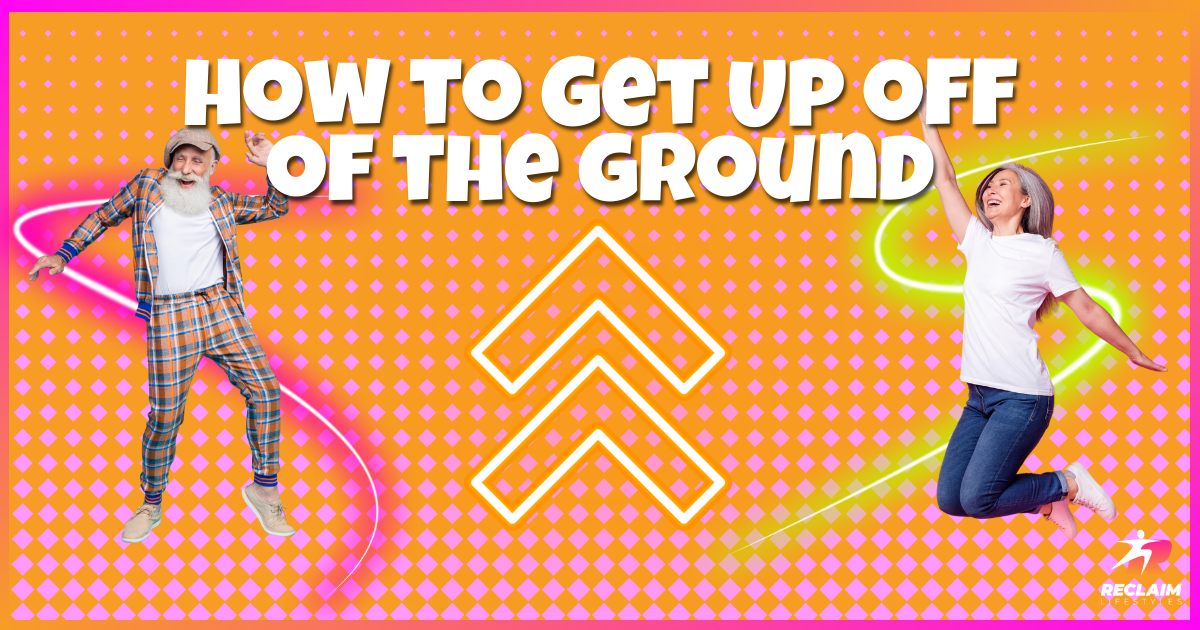How to Get Up Off the Ground
We’ve all seen the ads. An elderly person is down on the ground and they say the classic line: “Help! I’ve fallen and I can’t get up!” Though some find the ads verge on humorous in their exaggerated execution, falling when you’re older can be decidedly unfunny. When you’re young, you bounce; when you’re old, you go splat. Some folks find that they may have gone to the ground by choice, but getting back up is a whole other story.
So how can you give yourself the best odds of getting back up again if you get knocked down? Well you can probably guess the first thing we’re gonna say: stay active. If you’re used to getting down and up again, getting up after an accidental fall will be far easier than if you haven’t found yourself on the ground in years. It’s another case of use it or lose it.
Knowing the mechanics of how to get up can also be helpful if you do find yourself on the ground. Our exercise expert Ben Dreyer broke down a couple common ways that people get off the ground as a helpful reference. Use this blog as an opportunity to test yourself for how well you can go from the ground to standing. Which of the techniques works best for you? What can you work on to improve your ability to get up?
How Many Touches Does It Take?
A paper published in The European Society of Cardiology 2012 concluded that the inability to sit and rise from the floor (tested by a sitting-rising test or SRT) is a significant predictor of all-cause mortality in 51- to 80-year-old participants. The SRT has since been promoted with some variations as a handy means of self-assessing one’s musculoskeletal strength and fitness and some even posit that your score can tell you what lifespan you might be able to expect. Essentially, the advice goes that the more touchpoints you need on your way up, the “lower your score” (or shorter your lifespan). We don’t want you to get too hung up on that, though. The most important thing is being able to get up at all. You can work on reducing your number of touches to do it by working on your overall fitness with regular physical activity.
The Hands Walk-Up
The first technique starts with getting into a sitting position. From there you can roll to either side to get on all fours, your hands and knees. Then, tuck your toes and start to straighten your legs while walking your hands back towards your feet, shifting your weight onto your legs until you can stand up all the way.
The Lunge-Up
The second technique also starts with getting into a sitting position. Then, tuck one leg under the other. Put one hand down on the floor and use it to help yourself maneuver up into a kneeling position. From there, do a full lunge up. While your ultimate goal would be to lunge up without using your hands, you can get a little extra help by putting a hand on your knee or on a nearby chair.
The Combo
A third way combines the two. Start from sitting and roll over onto all fours. Then, from all fours, you can bring one leg up so that you’re in a kneeling position. Once you have your bearings, lunge up!
One note Ben made was that he often sees people rush the transition from kneeling to lunging up. He encourages clients to separate the two motions. Give yourself a moment after you come to kneeling before you begin your lunge. Another thing to note is that getting to your hands and knees is really handy if you need extra help to get up the rest of the way. Once on all fours, you can crawl to a chair or other surface to use to lever yourself up.
Exhibit Z for Why Strength Training Is Important
Understanding the mechanics that go into something so critical as getting up off the ground can be excellent motivation for strength training. For example, being able to do a single-leg squat or lunges is directly related to your ability to get up off the ground. It can be helpful to know that exercises that may seem arbitrary are actually very functional. Maybe it’ll even inspire you to add an extra rep the next time you do lunges.
Preserving Independence
Staying independent as we age is very much tied to our ability to carry out the various activities of daily living. Sitting down, standing up, getting dressed, bathing, carrying groceries, grandkids, etc. When you lose your ability to do these things, you become dependent on caretakers to get you through each day. The best way to ensure that you can live as independently as possible for as long as possible. Time is the most precious resource we have. By spending a little time on your physical fitness on a consistent basis, you’ll give yourself more time that you can spend on your own terms in the long run.
Ready to implement a new routine? Download the Restart! app to begin personalized workouts you can do anywhere, anytime, with no extra equipment. It’s free for the first three months! And then just $24.99 per three months thereafter, with the option to cancel your subscription at any time.

